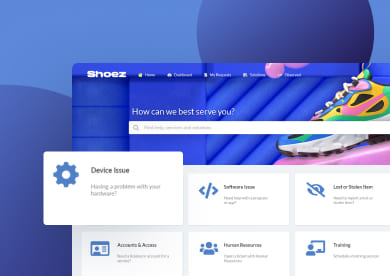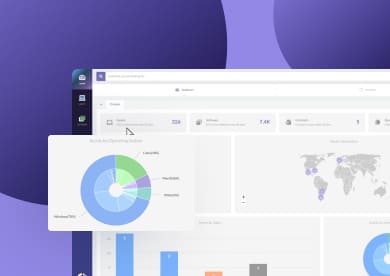Phantom inventory refers to items that appear in your inventory records but don’t actually exist. Maybe they were lost, stolen, disposed of, or simply never updated properly. Whatever the reason, the system thinks they’re still around, but they’re gone.
The term is usually tied to retail or logistics, where knowing exactly what’s in stock is crucial. But it can just as easily happen in IT Asset Management (ITAM) and, if you’re not careful, you could end up making decisions based on ghosts.
Let’s take a closer look at what phantom inventory means in ITAM, why it happens, and how to prevent it.
What is Phantom Inventory?
In technical terms, phantom inventory is the presence of assets in a database or Inventory Management system that are no longer physically present, usable, or valid — yet still recorded as active. These discrepancies can result from inaccurate data entry, failed updates, poor tracking processes, or breakdowns in the asset lifecycle.
Phantom inventory leads to false visibility, which can skew reporting, waste resources, and create compliance risks, especially when those records are used for audits, budgeting, or security decisions.
Phantom inventory in IT Asset Management
In the context of IT Asset Management, phantom inventory shows up when your asset records don’t reflect reality. And it’s more common than you’d think, especially in organizations with manual processes, siloed systems, or limited lifecycle oversight.
Here’s what it might look like:
- A laptop still marked as "in use," even though it was lost months ago and never reported.
- A server that was decommissioned but never removed from the CMDB.
- Software licenses assigned to devices that were wiped, sold, or recycled.
- Devices assigned to employees who left the company — and were never recovered or reassigned.
- Duplicate entries from imports or automated tools that weren’t properly reconciled.
In all of these cases, the assets are still "alive" on paper, but they’re either gone, non-functional, or irrelevant. And the longer they sit there, the more they distort your asset inventory, which can lead to:
- Overspending on maintenance, licenses, or replacements
- Failing IT audits due to inconsistent records
- Security vulnerabilities from untracked or rogue devices
- Poor decision-making based on inaccurate data
That’s why catching and clearing phantom inventory is such a big deal for effective ITAM.

The top 5 risks of phantom inventory in IT Asset Management
Phantom inventory might seem harmless at first. Just a few outdated records, right? But those "ghost" assets can have real consequences across your IT operations. Here are five key risks to watch out for.
1. Wasted budget on non-existent assets
When your inventory includes assets that aren’t actually there, it’s easy to start pouring money into things you don’t need. Think about renewing licenses, support contracts, or warranties for devices that were lost, disposed of, or stolen months ago.
It’s not just a budgeting mistake, it’s money that could’ve gone toward real upgrades or critical projects.
2. Audit failures and compliance issues
Audits rely on accurate records. If your asset inventory doesn’t match your actual infrastructure, that’s a big red flag.
Whether you're dealing with internal audits or external compliance checks, phantom inventory can lead to failed audits, potential fines, and a lot of explaining to do, especially in highly regulated industries like healthcare, finance, or government.
3. Security vulnerabilities
Assets that no longer exist (but are still marked as active) can become serious blind spots in your security strategy. Maybe a stolen laptop still has valid credentials.
Maybe a decommissioned server was never wiped. If it’s still "alive" in your system but forgotten in reality, you’re opening the door to unnecessary risk.
4. Skewed reporting and poor decision-making
Your IT strategy is only as strong as your data. When phantom inventory inflates your asset count, your reports lose accuracy, which leads to bad calls on capacity planning, replacements, or new purchases.
You might think you're covered, or in a shortage, when the truth is buried under inaccurate records.
5. Inefficient IT operations
Chasing down devices that don’t exist, trying to recover assets during offboarding, troubleshooting endpoints that were wiped months ago, it’s all wasted time.
Phantom inventory clutters your systems, confuses your workflows, and distracts your team from real, high-impact work.
Tips to prevent phantom inventory in IT Asset Management
The good news? Phantom inventory isn’t inevitable. With the right habits and tools in place, you can keep your records clean, accurate, and reliable. Here are six practical tips to help you prevent ghost assets from haunting your IT environment.
1. Automate asset discovery
Manual tracking is a fast track to errors. Set up automated discovery tools — either agent-based, agentless, or a mix of both — to scan your network and keep your inventory up to date.
This helps ensure every device is accounted for and inactive assets are flagged before they become a problem.

2. Track the full asset lifecycle
IT Asset Management doesn’t stop at IT procurement. Make sure you’re logging every step of an asset’s journey, from onboarding and daily use to reassignments, repairs, and disposal.
Having visibility into the entire lifecycle makes it much harder for an asset to fall through the cracks.
3. Integrate your ITAM platform with other systems
Disconnected tools lead to disconnected data. Link your ITAM platform with your HR system, help desk, procurement software, and more.
This way, events like employee offboarding or ticket resolution automatically trigger asset status changes, and your inventory stays in sync.
4. Run regular audits and reconciliations
Even with automation, you still need to double-check. Set a schedule for periodic audits (either physically or digitally) to compare your system records with the actual state of your environment.
These reconciliations help you spot ghost assets early and clean them out before they cause issues.
5. Assign clear asset ownership
When no one’s responsible, things get lost. Assign each asset to a person, department, or role.
This encourages accountability and makes it easier to track down equipment — especially during offboarding or office moves.
6. Standardize your asset status updates
Define and enforce a clear process for changing asset statuses. For example: "Retired" means it’s been wiped and physically removed. "In repair" means it’s off the network temporarily.
The more consistent your terminology and update process, the fewer outdated or misleading entries you’ll have to deal with later.
Final thoughts
Phantom inventory might not sound like a big deal — until it starts affecting your budget, your audits, and your ability to make smart decisions. The key to avoiding it isn’t just having a system in place, but making sure that system is accurate, integrated, and regularly maintained.
With InvGate Asset Management, you can keep your asset inventory clean, reliable, and audit-ready through automated discovery, full lifecycle tracking, and seamless integrations. And the best part? You can try it out free for 30 days — no strings attached.
Start your free trial today and see the difference for yourself.















